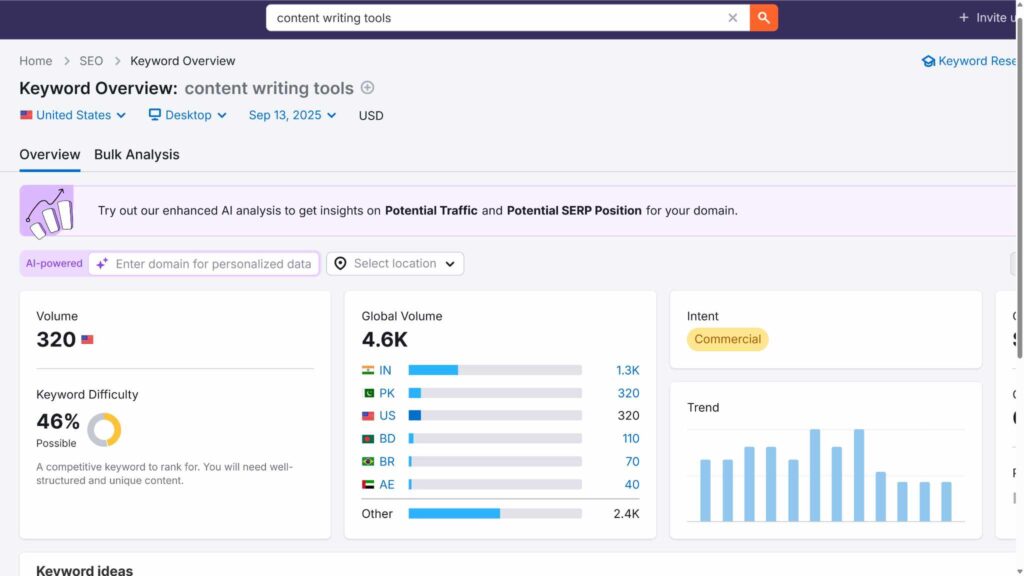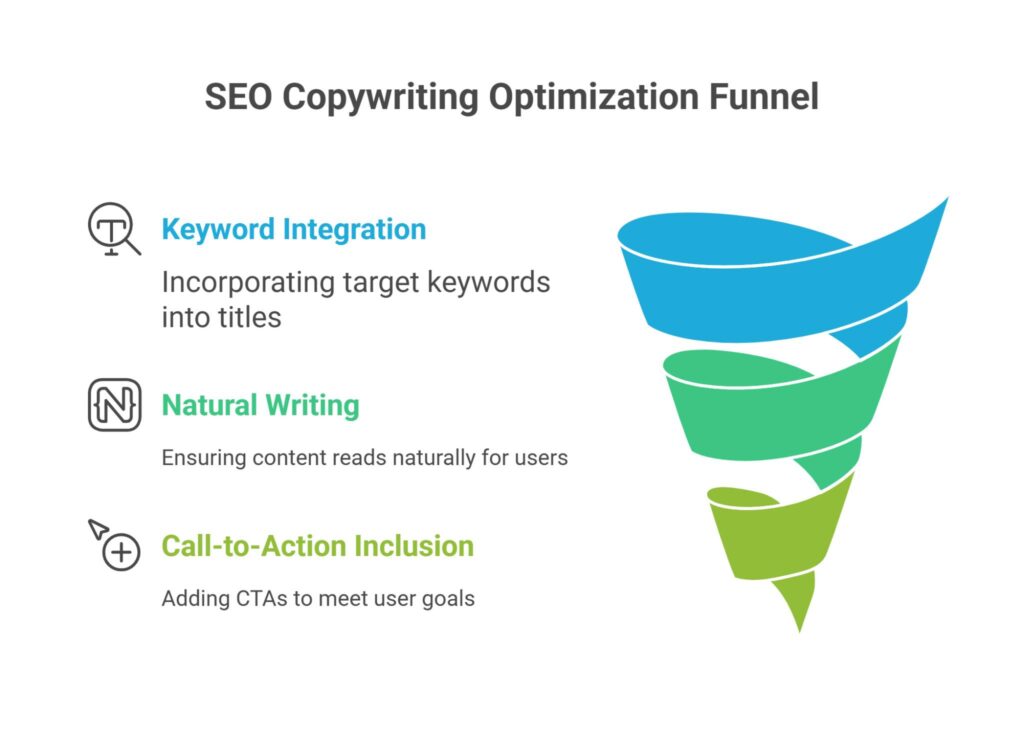Everyone wants their pages to rank well on search engines while still engaging real people. By combining targeted keywords with clear and helpful text, you can connect with your audience and raise overall visibility. This strategy includes deliberate word choices, tidy structure, and thorough research. It helps address user queries while maintaining search-friendliness. The result is a balanced site that attracts both readers and algorithms. Below, you will find essential concepts and steps that show how to use SEO writing well. These sections examine relevant terms, show how to build an SEO content strategy, and list best practices for consistent growth.
What is SEO Writing?
SEO writing combines engaging text with specific keywords to match user queries on search engines. It goes beyond random terms by aiming for clarity, structure, and relevance. This method attracts organic traffic, supports brand authority, and can boost rankings across different niches.
How does SEO writing differ from regular writing?
SEO writing targets both search engines and humans by using keywords and considering user intent. Regular text focuses on pure storytelling. According to HubSpot’s data, blog posts show high ROI. SEO writing adds structured optimization for improved visibility.
“Here’s the brutal truth about SEO. There are way too many people in internet marketing today that think ‘great content’ is enough. They say ‘if I publish great content, Google will rank me.’ If only it were that easy… if you are serious about generating high quality links, you need to be very systematic with how you create & promote your content.”
-Brian Dean
Why does SEO writing matter for web visibility?
SEO writing connects strong content with on-page optimization. It combines creativity and strategy, so both users and crawlers find relevant pages. Quality text plus smart optimization can attract traffic and rank higher. This method also increases brand reach across search results.
Key Vocabulary in Content Writing for SEO
Content writing for SEO involves terms that shape how search engines read pages. Understanding each component—like meta descriptions, keyword density, and alt text—helps create a balanced method. These parts direct how readers and crawlers understand text, resulting in better overall relevance.
Meta descriptions: Why are they important?
Meta descriptions outline a page’s content in search results. They do not directly affect rankings, but they often inspire clicks. A brief, relevant snippet attracts visitors to click through, which can raise traffic and overall user engagement levels.
Keyword density: How much is too much?
Keyword density refers to how often a primary term appears in text. Most experts suggest 2–5% (The Publisher Desk). Overuse signals spam. Emphasize clarity and place keywords normally so they help users and rank online while maintaining trust.
Alt text: What role does it play in rankings?
Alt text describes images for screen readers and crawl bots. It increases ease of access and can raise search visibility. This text shows image context to Google, helping images appear in relevant searches. Clear and brief descriptions work best.
How to Build an SEO Content Strategy
An SEO content strategy gives a plan for creating pages that respond to search demand and user intent. This method includes targeted keywords, structured writing, and continuous improvement. The result often includes stronger rankings, better traffic, and greater audience engagement.
Step 1: Define user intent behind keywords
User intent shows what people want when they type specific keywords. It could be informational, navigational, or transactional. Meeting that intent pleases visitors and shows relevance to Google. This step guides your entire content direction.

Step 2: Plan content around search demand
Planning content includes matching topics with actual search demand. About 68% of online visits begin with a search engine. Choose terms with good volume, then create articles or pages to satisfy these queries and user needs.
Step 3: Map keywords to content format types
Assigning keywords means matching each phrase to a right content format. Some queries need blog posts, while others need product pages. Matching keyword intent with the correct format helps both users and crawlers. This match increases performance.
Content SEO Best Practices to Remember
Content SEO best practices improve visibility and user trust. They include logical headers, internal linking, and careful keyword usage. These parts direct visitors, encourage engagement, and help search engines index pages. Done correctly, they maintain higher visibility over time.
Use headers to break up your text logically
Headers divide writing into sections. A single H1 establishes your page’s main theme, while H2 and H3 tags group related ideas. Users scan content and crawlers understand structure. This method increases readability and supports structured on-page SEO.
Structure quality internal linking in your pages
Internal links direct both visitors and search engines. They help Google understand content connections. Linking from popular pages to newer articles increases authority flow. According to Google, exact match anchor text within your domain is often safe.
Avoid keyword stuffing and aim for clarity
Avoid cramming keywords into every sentence. This habit hurts readability and may lower rankings. Some sites have lost 30% to 50% of traffic overnight after repeated violations. Write for people and support queries honestly and clearly.
SEO Copywriting Tips for Better Results
SEO copywriting tips help create appealing text that both users and crawlers appreciate. It includes writing engaging titles, readable paragraphs, and careful keyword placement. This style creates trust, leads to improved conversions, and supports a strong SEO foundation.

Create compelling titles with target keywords
Titles attract clicks and set what they expect. Including target terms early improves page relevance. Experts suggest placing the keyword near the start. Keep titles under 60 characters, and focus on clarity instead of fluff.
Write naturally so it isn’t just for machines
Write with a conversational style so the text feels human. Excessive keyword repeating can puzzle readers. Combine short paragraphs with everyday language. Keep headings clear. Meet user intent first, then optimize. This method improves satisfaction and shows real value.
Include call-to-actions that serve user goals
Call-to-actions help users take the next step. They direct visitors to forms, purchases, or more details. Keeping them relevant and helpful increases engagement. These buttons move people to useful results. Always match CTAs with what readers need.
How to Optimize Content for Search Engines
How to optimize content for search engines includes continuous updates, faster page performance, and structured data. By updating older posts, shrinking images, and adding schema, you maintain relevance. This method matches user intent with modern SEO requirements.
Update older posts with fresh keywords
Older posts can age. Updating them with current keywords shows relevance. Content marketers who review and update old material are 2.8 times more likely to see good results. Change titles, stats, and meta elements for better ranking chances.
Optimize images for faster page load
Images often increase load times. About 64% of a site’s size can come from images. Shrinking files, choosing the right format, and removing unnecessary metadata reduce size. Faster pages improve user staying time and search performance.
Make use of schema markup when relevant
Schema markup adds structured information about people, products, or events. It helps search engines display rich results and can increase organic traffic and conversions. Use JSON-LD or other formats, and choose the right schema types.
Conclusion
SEO writing combines user-focused content and technical optimization. By analyzing user intent, structuring text with headers, and placing keywords carefully, creators make webpages attractive to both readers and crawlers. Updating older posts, shrinking images, and using schema markup further improve visibility. The result might not be immediate, but consistent following of these practices usually leads to lasting improvements. Whether you run a blog or an eCommerce site, these practices help your pages rank and gain credibility. SEO writing remains a flexible field that thrives on clarity, relevance, and real engagement, making sure valuable content stays in search results.
FAQ
What is the role of keyword research in SEO writing?
Keyword research finds terms that match user needs. It sets direction for your content theme. By finding relevant phrases with feasible competition, you craft pages that rank better and address audience questions or problems.
How do content SEO best practices apply to blogs and eCommerce?
Blogs rely on informative posts to attract readers. eCommerce sites need optimized product pages and category layouts. Both benefit from internal links, balanced keyword usage, and text that encourages engagement and higher visibility on search engines.
Can over-optimizing affect my SEO ranking?
Yes. Over-optimization, including stuffing keywords or forcing awkward text, might lower your ranking. Search engines prefer a balanced approach that meets user needs and follows guidelines, producing long-term gains and preventing penalties.
What are common mistakes in seo writing beginners make?
Beginners often cram too many keywords, forget user intent, and skip proper headers. Their text can lack clarity or structure. They might ignore meta details or internal links, limiting presence and harming site movement around the site.
How do I choose the right content format as part of an seo content strategy?
Assess the keyword’s purpose. If users want answers, create blog posts. For direct product queries, use landing pages. Tutorials suit instructional keywords. Matching the right format satisfies visitors and secures higher placement in search.

Ridam Khare is an SEO strategist with 7+ years of experience specializing in AI-driven content creation. He helps businesses scale high-quality blogs that rank, engage, and convert.



